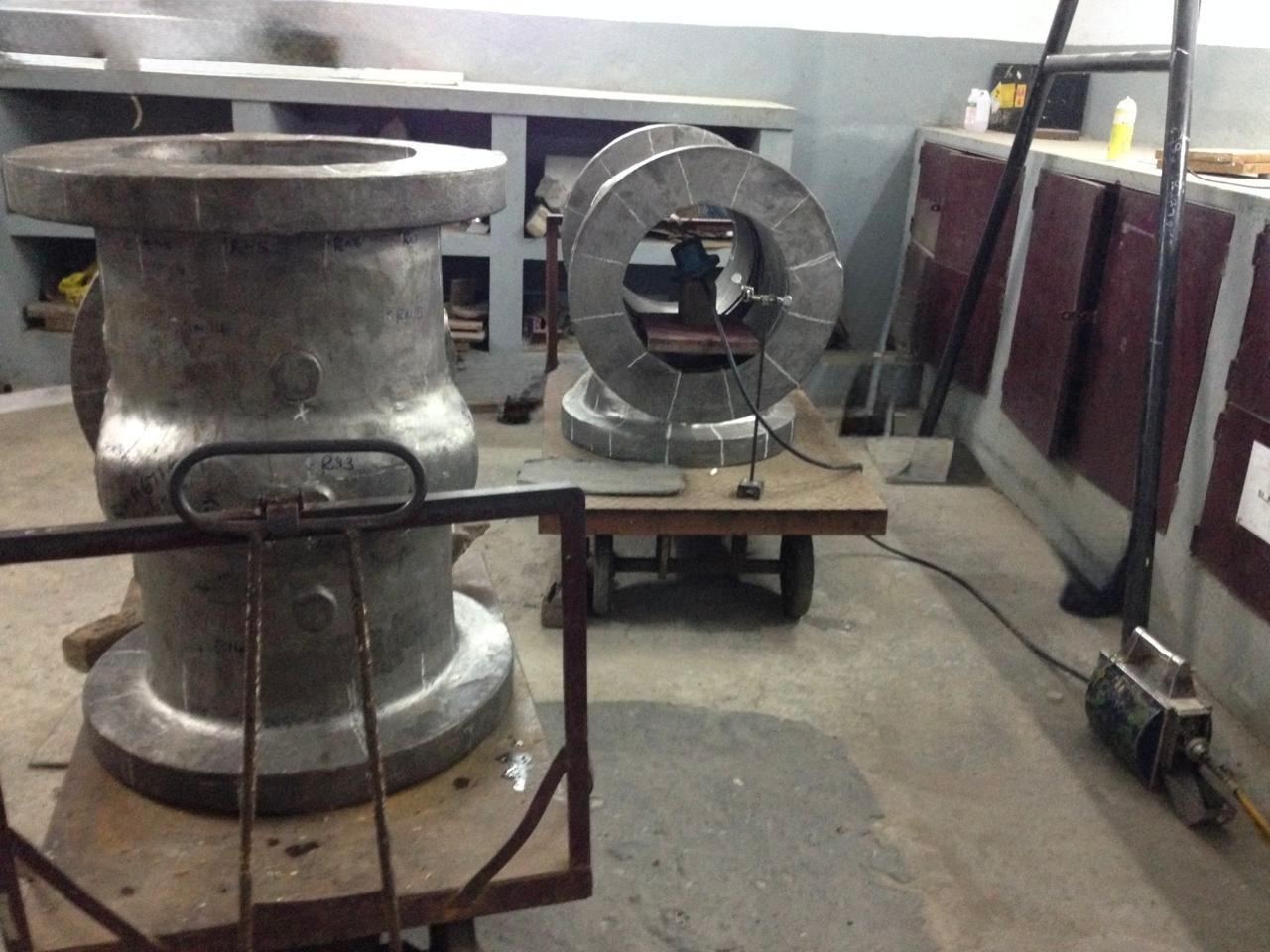
Radiography testing (RT) is a non-destructive testing (NDT) method that uses ionizing radiation to inspect the internal structure of materials and components. By utilizing the differential penetration of radiation, RT can detect hidden flaws and discontinuities.
Scaanray Metallurgical Services are Pioneers in the field of RT with qualified team as per BARC Level I, Level II (RSO), SNT TC 1A and ISO 9712 operating a wide range of Equipments like Delta 880, Roli 2, Balteau X Ray, Dangdong 250 kV working inside Enclosures (Foundry Based), Onsite etc.
The strength of Scaanray Metallurgical Services lies in its inventory of Cameras with different Curie and Manpower capable of taking projects of any size with on time delivery.
Principle of Radiography Testing
RT involves the following fundamental principles:
- Radiation Source: A source of high-energy electromagnetic radiation, typically X-rays or gamma rays, is used.
- Penetration: The radiation is directed through the test object.
- Differential Absorption: Variations in the material’s density and thickness cause differential absorption of the radiation. Denser or thicker areas absorb more radiation, while less dense areas or flaws allow more radiation to pass through.
- Image Capture: A detector, such as radiographic film or a digital detector, is placed behind the object to capture the transmitted radiation.
- Image Formation: The detector records the variations in radiation intensity, creating an image that represents the internal structure of the test object.
Materials and Equipment
- Radiation Sources:
- X-ray generators: Produce X-rays by accelerating electrons and bombarding them onto a target material.
- Gamma-ray sources: Utilize radioactive isotopes (e.g., iridium-192, cobalt-60) that emit gamma rays during radioactive decay.
- Detectors:
- Radiographic film: A traditional image receptor that provides a permanent record.
- Digital detectors: Electronic devices that convert radiation into digital signals, allowing for real-time imaging and digital storage. Types include:
- Computed Radiography (CR): Uses a reusable phosphor imaging plate.
- Digital Radiography (DR): Employs a flat panel detector for direct digital image capture.
- Shielding: Radiation shielding is crucial for safety to protect personnel from exposure.
- Image Processing Equipment: For film radiography, this includes film processing equipment. For digital radiography, it involves computers and software for image display, analysis, and storage.
Procedure
The general radiographic testing procedure involves the following steps:
- Test object preparation: The test object is positioned between the radiation source and the detector.
- Radiation exposure: The radiation source is activated for a predetermined time to allow radiation to penetrate the object and reach the detector. Exposure time and radiation intensity are determined based on the material type, thickness, and desired image quality.
- Image acquisition: The detector captures the transmitted radiation, forming a latent image (in film radiography) or a digital image.
- Image processing:
- For film radiography: The film is chemically processed to develop the image.
- For digital radiography: The digital image is displayed on a computer screen and can be further processed to enhance contrast and clarity.
- Image interpretation: A qualified interpreter analyzes the radiographic image to identify any indications of flaws or discontinuities.
- Documentation: The test results, including the radiographic image and interpretation report, are documented.
Advantages of Radiography Testing
- Detects both surface and subsurface flaws
- Can inspect a wide range of materials (metals, ceramics, composites)
- Provides a permanent record of the inspection (especially with film)
- Relatively minimal surface preparation required
- Can be used to inspect complex shapes
Disadvantages of Radiography Testing
- Potential health hazards due to radiation exposure
- Requires specialized equipment and trained personnel
- Relatively slow process compared to some other NDT methods
- Limited sensitivity to certain types of flaws (e.g., tight cracks parallel to the radiation beam)
- Access to both sides of the test object is often required
Applications
Radiography testing is widely used in various industries, including:
- Aerospace: Inspecting welds in aircraft structures, turbine blades, and other critical components.
- Oil and Gas: Examining welds in pipelines, pressure vessels, and storage tanks.
- Construction: Inspecting welds in bridges, buildings, and other structures.
- Manufacturing: Quality control of castings, forgings, and weldments.
Automotive: Inspecting welds and components in vehicles.
